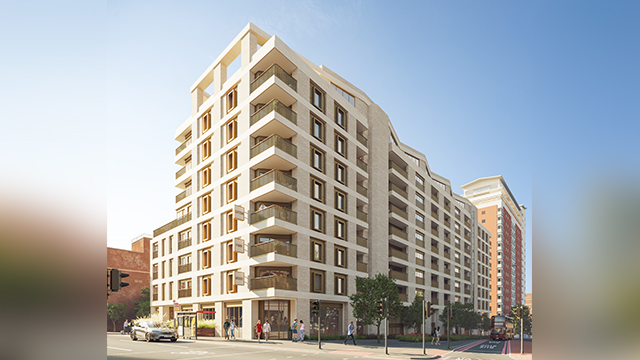When Newport city council’s corporate director for regeneration and environment, Sheila Davies, said she was planning a property sale, it took a lot of people by surprise.
The relatively new figurehead for Newport’s revival plans gave a refreshingly candid insight to EG this summer, including what the future of regeneration in the city might look like.
Newport owns around 400 buildings and plots of land, and Davies said she was aiming to get rid of large parts of this to help fund regeneration and bring down the council’s occupational bill by about 25% over the next five years, excluding education and social accommodation.
Early estimates suggested this could raise as much as £50m, bringing new private sector investors into the area.
Fast forward a few months, and the candour has disappeared.
Tight-lipped
The council is now tight-lipped about its plans, refusing to give interviews and elaborate further on what the sell-off could mean. Even local agents with a direct line to the council’s property team are keeping schtum, seduced by the prospect of winning work on any future sell-off.
But those close to the sale believe there might be other reasons for the secrecy. The National Audit Office is investigating a Welsh Assembly government land sale, which some say has made others nervous of setting down the asset sale path just now.
And then there is the size of Newport’s potential portfolio. One insider close to the plans, who did not wish to be named, says: “The council is conducting a review of its portfolio over the next few months, but perceptions of multi-million-pound sales might be quite a long way off.”
The low expectations for the sale tallies with a wider sense of scepticism in the market, in part brought on by similar moves by other councils, including Cardiff.
“A lot of the assets they own will be similar to Cardiff,” says Savills associate director for investment Ross Griffin. “There are a couple of half-decent sites which have potential for residential, but a lot of the portfolio will be bitty little industrial units and small shops. If it is like that, it is going to struggle.”
Newport may be following in the footsteps of its larger neighbour, but the apparent intention to use the process to drive regeneration is to be welcomed, and Davies’ track record of attracting inward investment at Rhondda Cynon Taff county borough council suggests she could be the person to pull it off.
Risky decisions
But, as with any significant disposal of publicly owned assets, there is a risk the process will become tied in red tape. The council’s regeneration team may be keen to push forward, but convincing councillors to take politically risky decisions can be another matter.
“One thing they will be very conscious of is the Audit Office investigation into the Welsh Assembly government’s land sell-off, which has been heavily criticised,” says DPP planning director Gareth Hooper.
“Any authority planning sales is going to look very carefully to make sure they can achieve best value.”
Regardless of what the Audit Office investigation might achieve, it seems reasonable to assume it has had some impact on thinking at Newport, albeit with no firm indication of what that impact might be.
Even if Newport does push ahead with a significant asset sale and manages to raise substantial amounts of cash, what might the money be used for?
Regeneration plans were hit hard by the downturn, and Modus’ collapse into administration forced a rethink and some bold decisions (see box, right).
For Paul Tarling, head of development at the council’s regeneration partner Newport Unlimited, plans have been updated rather than overhauled.
“We are focused on the city centre now, where most of the work is needed,” he says. “The biggest thing is the Friars Walk retail scheme, but we are also involved in some public realm initiatives around the market, and we have tenders in for some mixed-use development at Old Town Dock.”
Beyond that, the council hopes to attract new office occupiers to a handful of vacant city centre sites, and convert some of the older retail areas into residential, says Tarling.
But whatever the longer-term ambitions, both the private and public sectors appear to be in agreement that getting Friars Walk going first should be the priority.
Audit office investigation
News of the Wales Audit Office probe broke in September amid accusations that more than £20m of public land had been sold to Guernsey-based South Wales Land Developments shortly before a council report on public housing sites was published.
It is claimed some of the 16 parcels of land were subject to significant increases in value after the publication of the housing strategy.
One in particular, a 120-acre site on the northern edge of Cardiff which was bought by the South Wales Land Authority 27 years ago, was sold four months before Cardiff council published its planning blueprint, paving the way for the site to become part of a wider area of land that could be developed for 6,000 homes.
The Welsh Assembly government claims the sale included a clawback deal, so taxpayers would benefit from any uplift in land value, but critics say the process lacked transparency.
As with Newport, the Regeneration Investment Fund for Wales, the public body that assumed ownership of the land in 2010, intended to sell the sites to raise cash for urban regeneration.
Retail revival
The Friars Walk retail scheme has been reincarnated since the collapse of Modus in 2009 and now developer Queensberry Real Estate is pushing on with a downsized scheme, with prelets to Debenhams and Cineworld now signed.
But despite these deals, plus two “fashion retailers” currently under offer, there remains a mountain to climb before work can start.
Queensberry partner Paul Sargent has started speaking to funders about the project. He says the company hopes to reach an agreement with an investor – an opportunity fund or an institution – in the new year on the basis of a minimum leasing threshold, probably 60% to 70%.
The centre is 30% let or under offer, and Sargent thinks it may be necessary to strike a funding deal with a contractor to help with the £60m construction cost.
Queensberry faces not just a struggling retail sector, but also stiff competition from St David’s 2 in Cardiff.
Sargent’s fellow partner Stuart Harris says Friars Walk will not try to compete with the Welsh capital’s larger retail offering, and will be pitched at “catchment-appropriate” mid-market tenants that Newport lacks.
DPP planning director Gareth Hooper believes the new emphasis on leisure, particularly with the Cineworld deal, is a sensible strategy, which, together with the scaled-down ambitions, should increase the chances of success.
For Harris, it is not just Cineworld but the nearby rugby and football clubs, the theatre and a leisure centre that will help to increase footfall to the whole area through a broad leisure offering.
If everything goes to plan, work on the centre will finally start next autumn. If it does, the prospects for a portfolio sell-off could be far brighter.
Savills associate director for investment Ross Griffin believes there is cash in the area and some investor appetite, but the “uncertainty around Friars Walk” has so far deterred it.
Should the scheme get under way and the council begins to market some genuinely attractive sites, then cash could begin to flow in, he says.
“There is demand there, but it is very price-sensitive, so it has to be 15-20% cheaper than Cardiff,” says Savills development director Gareth Carter.
“There will be good demand for residential sites out of the city centre, and some in the city centre, but the values will be completely different.”
Most of the major housebuilders have active requirements in South Wales, including Barratt, Persimmon, Taylor Wimpey, Redrow, Bovis and Bellway.
The number of developers may be way down on pre-recession levels, but Carter says they all have form, funding and appetite, and could be interested in some council-owned assets.
Big regeneration-focused companies such as St Modwen also have a track record in the area, and could be a viable partner for the council. Others, such as Newbridge Construction and Cardiff-based PMG, could also be interested.
jack.sidders@estatesgazette.com











